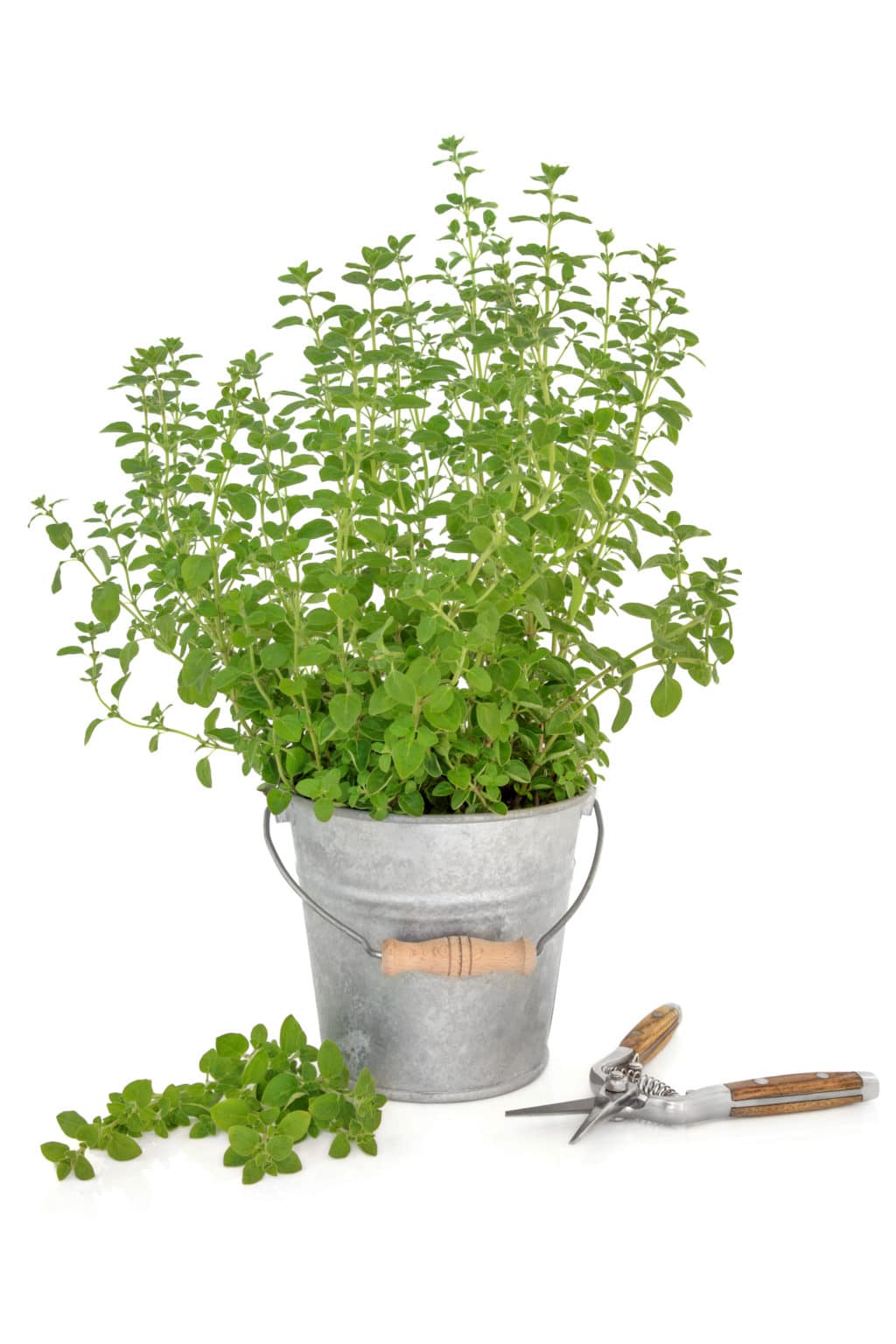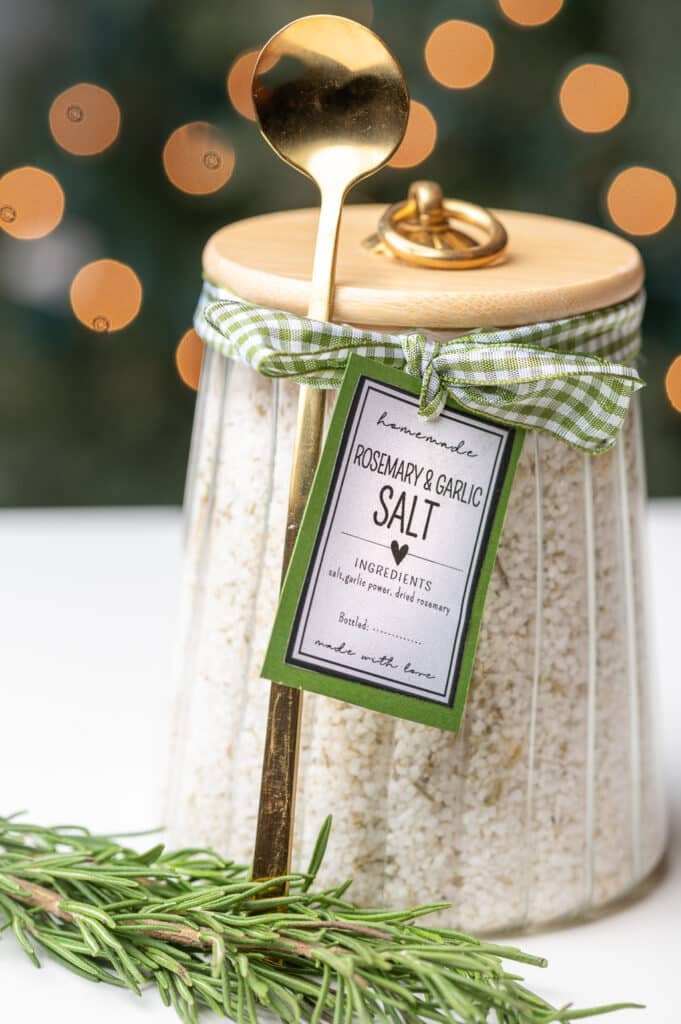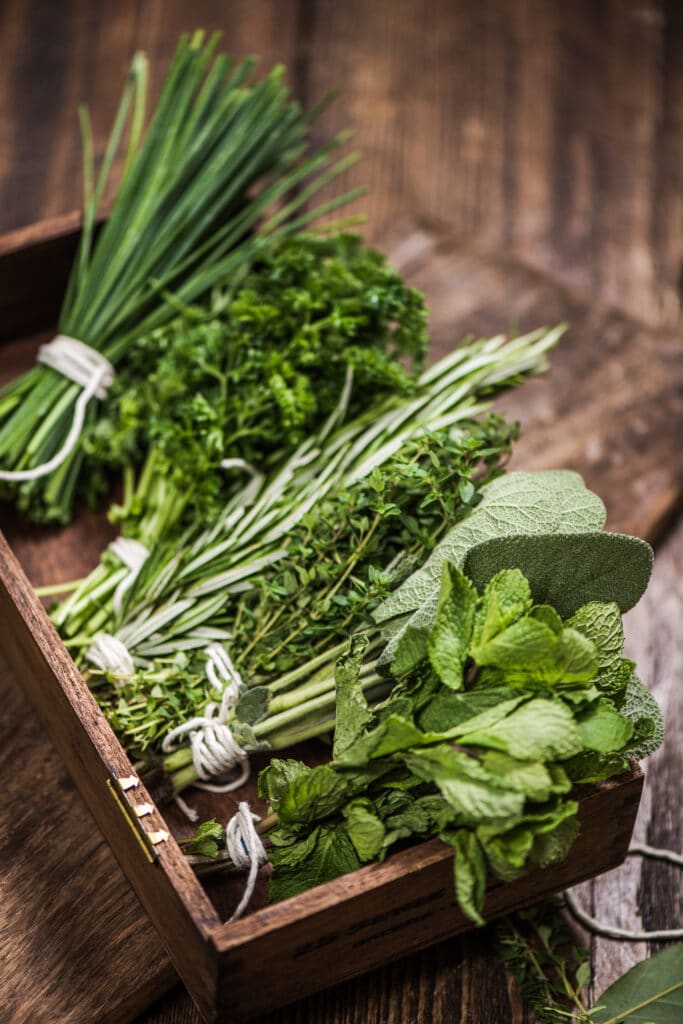Your Kitchen’s Best Kept Secret: The Best Herbs To Grow Indoors
Imagine a fresh pinch of basil in your pasta, rosemary in your roasted vegetables, or mint in your tea—all grown right on your windowsill! With a DIY indoor herb garden, you can have delicious fresh herbs at your fingertips, even in the coldest months, adding vibrant flavor and color to your kitchen.
In this engaging guide, we’ll explore the best herbs to grow indoors and the fantastic benefits of having an indoor herb garden. We’ll also provide valuable tips for setup and care. Plus, we’ll tackle common challenges in our indoor herb garden troubleshooting guide. Whether you’re a seasoned gardener or just beginning, you’ll find everything you need to cultivate a flourishing indoor herb garden year-round!

Affiliate Disclosure
This post may contain affiliate links. If you click one and purchase, I may receive a commission at no additional cost. You can read our disclosure policy here.
Why Grow an Indoor Herb Garden?
Growing herbs indoors is a delightful and eco-friendly way to elevate your cooking and enrich your life. Discover the lovely benefits waiting for you!
- Year-Round Access: You can enjoy fresh herbs all year, even when outdoor conditions are not ideal.
- Health Benefits: Herbs contain antioxidants, vitamins, and minerals, adding flavor without extra calories or sodium.
- Aesthetics: Indoor herbs add greenery to your home, creating a sense of calm and helping to clean the air.
- Convenience: Having herbs at your fingertips can save you some cash. Have you seen the price of herbs at the store these days?
Getting Started: Indoor Herb Garden Essentials
Equipment List for Your Indoor Herb Garden
Before you begin, gather the following essential equipment to ensure success:
- Containers with Drainage: Pots with drainage holes are crucial to prevent root rot. Terracotta or ceramic pots are excellent choices.
- High-Quality Potting Soil: Use an organic, peat-free potting mix that’s well-draining yet moisture-retentive.
- Grow Lights: Full-spectrum LED grow lights can supplement or replace sunlight if natural sunlight is limited.
- Humidity Trays or Pebble Trays: To increase humidity around your herbs, use trays filled with water and pebbles.
- Miniature Garden Tools: A trowel, pruning shears, and a watering can with a narrow spout.
- Herb Seeds or Seedlings: Choose herbs suitable for indoor growing.
- Fertilizer: A balanced, organic liquid fertilizer for monthly feeding.
- Labels: Chalkboard stakes or markers can be used to label each herb.

Choosing the Right Location
- Light: Most herbs need 6-8 hours of sunlight. A sunny, south-facing windowsill is ideal. If that’s not available, consider using grow lights.
- Temperature: Herbs prefer stable temperatures between 65°F and 75°F. Avoid placing them near heat sources, drafty windows, or air vents.
- Humidity: Indoor air can be dry, especially in winter. Increase humidity by misting your herbs, using humidity trays, or grouping plants.

Detailed Lighting Solutions
If natural light is insufficient, here are some options:
- LED Grow Lights: LED grow lights are terrific – They do not overheat, and they are exceptionally energy efficient. Full-spectrum LEDs mimic natural sunlight, promoting healthy growth. Brands like Spider Farmer and VIPARSPECTRA are popular choices, though they are a bit on the pricey end. For those on a budget, there are more affordable LED grow light options that still deliver reliable performance.
- Fluorescent Lights: Compact fluorescent lamps (CFLs) are affordable and suitable for small spaces.
- Placement: Position grow lights 6-12 inches above the plants and run them for 12-16 hours daily.
Aesthetic Tips for Your Indoor Herb Garden
Create a beautiful herb display that doubles as kitchen decor! Consider:
- Matching Pots: Use a set of matching terracotta or ceramic pots for a cohesive look.
- Elevated Trays or Stands: Elevate the garden with tiered or small stands to maximize light exposure and add visual interest.
- Wall-Mounted Planters: Save space and create a living wall with mounted herb planters.
- Labeling: Use small chalkboard stakes or write directly on the pots—stylish and practical.
Best Herbs to Grow Indoors: Beginner-Friendly Choices
Starting with easy-to-grow herbs can boost your confidence. Here are some recommendations:
Beginner Herbs (Low Maintenance)
- Mint (Maintenance Level: Low)
- Chives (Maintenance Level: Low)
- Parsley (Maintenance Level: Medium)
- Thyme (Maintenance Level: Medium)
- Basil (Maintenance Level: Medium)
Advanced Herbs for Indoor Growing
Once you’re comfortable, try growing herbs that require a bit more attention:
- Cilantro (Maintenance Level: High)
- Dill (Maintenance Level: High)
- Rosemary (Maintenance Level: High)
- Oregano (Maintenance Level: Medium)
- Bay Laurel (Maintenance Level: Medium)

Top Tips for Growing Herbs Indoors Successfully
Containers and Drainage
Herbs need pots with good drainage to prevent root rot. Avoid containers without drainage holes. Terracotta pots are breathable and help regulate soil moisture.
Potting Soil
Choose high-quality, organic potting soil. Avoid garden soil, which can be too dense and may harbor pests or diseases. Peat-free mixes retain moisture without becoming waterlogged.
Start Small and Build
Begin with 2-3 herbs you use often. For example, if you love Italian cuisine, start with basil, oregano, and rosemary. Cilantro is a must for Mexican dishes.
Fertilizing Indoor Herbs
Light monthly feeding is necessary since indoor herbs don’t receive nutrients from rain or outdoor soil. To avoid nutrient burn, use a half-strength liquid fertilizer once a month.
Rotate for Even Light Exposure
Rotate your pots every few days so all sides of the plant receive sunlight. This helps prevent uneven growth and encourages bushier, more compact plants.

Detailed Care Tips for the 10 Best Herbs to Grow Indoors
Below are detailed care tips for each herb to help your indoor garden thrive.
Basil (Maintenance Level: Medium)
- Light: Needs 6-8 hours of bright sunlight; supplement with a grow light if needed.
- Water: Keep soil consistently moist but avoid waterlogging. Water when the top inch of soil is dry.
- Humidity: Thrives with moderate moisture. Consider misting or placing near other plants.
- Pruning: Regular trimming is essential for bushier growth; pinch off any flowers to focus the plant’s energy on leaf production.
- Potting: Use a well-draining organic potting mix and a container with suitable drainage holes.
See our complete guides for growing robust and healthy basil plants from seed to harvest, and what to do with basil after a plentiful harvest.

Mint (Maintenance Level: Low)
- Light: 4-6 hours daily; adaptable to indirect light.
- Water: Keep the soil consistently moist.
- Humidity: Loves high humidity. Misting or grouping with other plants can help.
- Growth Control: Mint can be invasive, so keep it in its pot.
- Soil: Prefers a rich, well-draining potting mix.

See our guide with tips and tricks on How To Grow Mint.
Chives (Maintenance Level: Low)
- Light: Needs 6+ hours of direct sunlight.
- Water: Keep soil evenly moist.
- Pruning: Trim chives frequently, cutting down to about 1 inch from the base.
- Soil: Well-draining potting mix; add organic matter for best results.
- Fertilizing: Use a half-strength fertilizer monthly during active growth.

See our complete guide for growing a robust and healthy Chive Plant plus our tips on all the things can you do with your harvest.
Parsley (Maintenance Level: Medium)
- Light: Prefers 5-6 hours of light daily.
- Water: Water deeply when the top inch of soil is dry.
- Pruning: Harvest the outermost leaves first.
- Soil: Moist, well-draining soil with organic matter.
- Fertilizing: Feed monthly with a balanced fertilizer.
Everything you need to know to grow a healthy Parsley Plant.
Thyme (Maintenance Level: Medium)
- Light: Needs full sun, ideally 6+ hours daily.
- Water: Let the soil dry out between waterings.
- Pruning: Trim regularly to prevent woody growth.
- Soil: Well-draining, sandy soil is best.
- Fertilizing: Use a diluted liquid fertilizer once a year.

See our tips and tricks guide on growing the best Thyme Plant.
Cilantro (Maintenance Level: High)
- Light: Requires at least 6 hours of sunlight.
- Water: Keep soil consistently moist.
- Pruning: Trim regularly to delay bolting.
- Soil: Loose, fast-draining potting mix.
- Fertilizing: Use a nitrogen-rich fertilizer monthly.

It tastes like soap to me, but if you want to grow a cilantro plant we have the complete guide!
Dill (Maintenance Level: High)
- Light: Requires 8 hours of sunlight.
- Water: Keep soil moist, but avoid standing water.
- Pruning: Harvest often but gently.
- Soil: Prefers well-draining, slightly acidic soil.
- Support: You may need a small stake to stay upright.
See our complete guide to growing dill at home.
Rosemary (Maintenance Level: High)
- Light: Needs 6-8 hours of direct sunlight.
- Water: Allow soil to dry out completely before watering.
- Pruning: Regularly prune to maintain shape.
- Soil: Gritty, well-draining mix with sand or perlite.
- Repotting: Repot annually to prevent root-bound issues.

Rosemary can be tricky, but we have a guide to help you with rosemary plants care.
Oregano (Maintenance Level: Medium)
- Light: Requires 6-8 hours of sunlight.
- Water: Allow soil to dry between waterings.
- Pruning: Regularly pinch off growing tips.
- Soil: Thrives in well-drained, slightly sandy soil.
- Fertilizing: Light feeding once a month during the growing season.

See our complete guide for growing an oregano plant right at home.
Bay Laurel (Maintenance Level: Medium)
- Light: Prefers bright, indirect light.
- Water: Water when the top inch of soil feels dry.
- Pruning: Harvest older leaves first.
- Humidity: Moderate humidity is best.
- Fertilizing: Use a balanced, water-soluble fertilizer in the growing season.

Bay laurel plants can be tricky too, but their care all boils down to the right care at the right time. Our bay leaf plant guide will help you with care and troubleshooting.
Troubleshooting Common Indoor Herb Garden Issues
Indoor herbs can thrive with a bit of attention to their unique needs. But sometimes we encounter issues that require intervention:
Leggy Growth
- Cause: Insufficient light or infrequent trimming.
- Solution: Relocate to a sunny windowsill or add a grow light. Regular trimming encourages fuller growth.
Yellow Leaves
- Cause: Overwatering or poor drainage.
- Solution: Ensure pots have adequate drainage holes, and let the soil dry out before watering again.
Wilting
- Cause: Can occur from both underwatering and overwatering.
- Solution: Check soil moisture by sticking your finger about an inch. Water if dry; adjust the watering schedule as needed.
Pests: Aphids and Spider Mites
- Cause: Indoor environments can attract pests.
- Solution: Regularly check leaves for pests. Use a gentle, homemade insecticidal soap or neem oil spray to deter aphids and spider mites.
We have guides to help with pest control, including specific guides for dealing with Aphids, and for identifying and controlling spider mites.
Root Rot
- Cause: Overwatering and poor drainage.
- Solution: Use well-draining soil and pots with drainage holes. Allow soil to dry between waterings.

Frequently Asked Questions
Q: Can I grow herbs indoors without direct sunlight?
A: Yes! Some herbs like mint, parsley, and chives can adapt to bright, indirect light. If natural light is limited, supplement with a full-spectrum grow light.
Q: How do I prevent pests on indoor herbs?
A: Regularly check leaves for pests and wipe them down. Use a gentle, homemade insecticidal soap or neem oil to deter common pests like aphids and spider mites.
Q: What is the best watering schedule for indoor herbs?
A: It varies by herb, but a general rule of thumb is to water when the top inch of soil feels dry. Herbs like basil prefer consistently moist soil, while rosemary likes it drier between waterings.
Q: How do I prune different herbs?
A: For leafy herbs like basil and mint, pinch off the top sets of leaves for more robust growth. Woody herbs like rosemary and thyme benefit from regular trimming to stop them from becoming woody.
Q: How do I adjust care for seasonal changes indoors?
A: In winter, indoor air can be drier, and light levels can be lower. Increase humidity with a humidifier or trays of water, and consider using grow lights to compensate for reduced daylight.
Using and Storing Your Fresh Herbs
Now that your indoor herb garden is thriving, here are some creative ways to make the most of your fresh herbs:
Cooking
- Basil, Oregano, Rosemary: Perfect for Italian dishes like pasta and pizza.
- Cilantro: Essential for Mexican and Asian recipes.
- Mint: Great for teas, desserts, and salads.
Teas
- Mint and Thyme: Make soothing herbal teas—experiment by mixing herbs for unique flavors.
Herbal Remedies
- Rosemary and Thyme: Known for their immune-boosting properties.
- Lavender and Chamomile: Use for relaxation and stress relief.
DIY Herb Oils and Salts
- Infused Oils: Infuse olive oil with herbs like basil and rosemary for flavorful cooking oils.
- Herbal Salts: Mix dried herbs with sea salt for custom seasoning blends.
Prolonging Freshness
- Refrigeration: Wrap herbs in a damp paper towel and place them in a plastic bag in the fridge.
- Freezing: For long-term storage, chop herbs and freeze in simple ice cube trays with water or olive oil.
Creative Herb Uses
- DIY Bath Salts: Use lavender or rosemary to create relaxing bath salts.
- Natural Cleaning Solutions: Infuse vinegar with herbs like thyme and rosemary for homemade cleaners.
- Herbal Sachets: Dried herbs can be used in sachets to freshen drawers or closets.
Home Fragrance
- Simmer Pots: Add fresh herbs like rosemary or bay laurel mixed with citrus peels to simmer water for a natural air freshener.
Other Creative Uses:
Seasonal Care Tips for Indoor Herbs
Winter Care
- Light: Days are shorter, so grow lights supplement natural light.
- Humidity: Indoor heating, especially in winter, can dry out the air. Increase humidity with humidifiers or trays of water.
- Temperature: Keep herbs away from drafts and cold windows.
Summer Care
- Light: Be cautious of intense sunlight that may scorch leaves. Provide filtered light if necessary.
- Watering: Herbs may dry out faster; check soil moisture more frequently.
- Pests: Warmer temperatures can attract pests. Inspect plants regularly.
Even More Resources for Herb Gardening
Final Thoughts: Enjoy Fresh Herbs Year-Round
Growing an indoor herb garden is not only practical but deeply satisfying. With the best herbs to grow indoors and tips, you’ll enjoy fresh flavors at your fingertips. If you liked these tips, don’t forget to share them on your favorite social media platform!
Let’s go garden!

Author: Laura Kennedy
Writer & Owner of Little Yellow Wheelbarrow
Laura is a highly skilled gardener and fervent flower enthusiast. Despite her playful battle with plant spacing guidelines, Laura’s work inspires gardeners to create thriving, beautiful spaces that reflect both creativity and sustainability.
Editor’s Note: This post was originally published on January 30, 2022, and was updated on December 4, 2024 for increased clarity and improved reader experience.















What is a good fertilizer for vegans indoor and outdoor vegetables and herbs to start out with? Thank you
Hi Annetta, the very best fertilizer you can use is compost you make yourself in your backyard since you know exactly what is going into it, no bone meal, no fish bones, just good old fashioned compost from vegetable scraps and yard waste. If that is not an option there are Peta approved fertilizers like https://downtoearthfertilizer.com/products/blended_fertilizer/vegan-mix-3-2-2/ and another product called VeganO 3-3-3 – which I cannot find on Amazon.com, but I did find on Amazon.ca way overpriced. You’re most likely to find these brands at a greenhouse or plant store. Worm castings are another option but come with a debate. I’ve seen some vegans say yes, and some vegans say no. You would be hard-pressed to find any fertilizer better than worm castings. A small spoonful on a herb plant is all you need every other month and your plants will grow like weeds. I started using them in my vegetable garden and I don’t think I would ever go back to organic fertilizers with bone meal and whatnot in them. I felt that they were a better organic choice for my garden. I hope that helps!
are you using liquid fertilizer for the herb plants and do you recommend any brand over another?
Hi Ryan, I do use liquid fertilizer on almost all my indoor plants, and my favorite has always been Promix, for indoor and outdoor, and my vegetable garden. It’s the only one I use. Cheers!